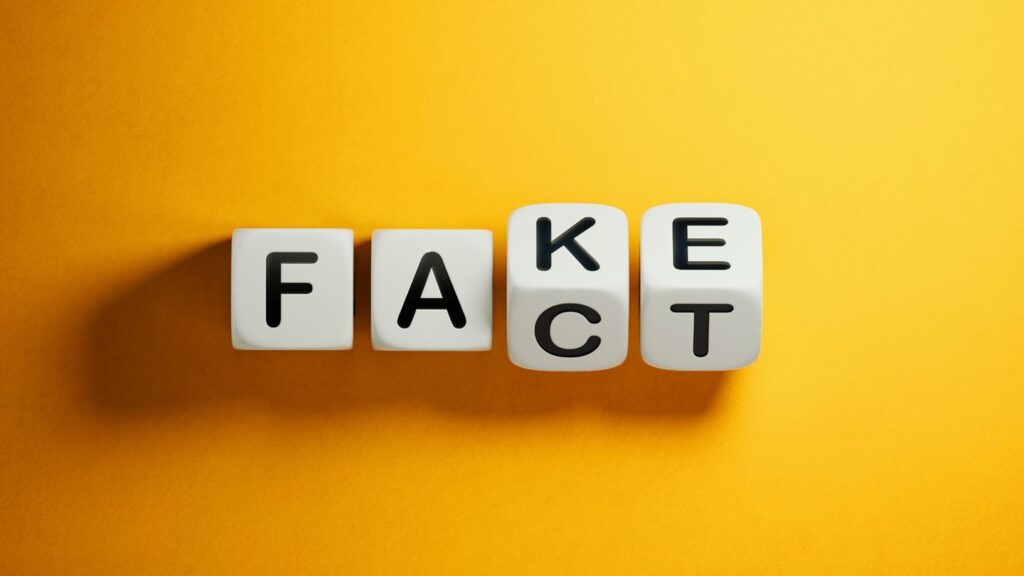Fake news isn’t a novel concept. However, the velocity with which it spreads in this digital age, especially via social media, makes it a menace. Companies like Facebook and Google are working towards curtailing the spread of these false narratives by controlling their ad revenues.
Yet, the responsibility to combat this challenge rests largely upon news consumers. As such, Mass Communication students, who are the next generation of media professionals, must prioritise media literacy and be adept at detecting misinformation.
Understanding Fake News: More than Just Fiction

In our rapidly evolving digital age, discerning fact from fiction has become more challenging yet crucial than ever before. As misinformation pervades our online and offline worlds, understanding the nuances of fake news and its origins becomes paramount for both individuals and professionals.
Types of Fake News:
- Completely False Stories: Fabricated tales designed to deceive.
- Partially True Stories: These have some factual elements but can be spun or framed to mislead.
- Disputed Truths: Instances where legitimate stories are labelled as fake news due to disagreements or biases.
Origins of Fake News:
Fake news isn’t a recent phenomenon. Yet, the advent of social media has amplified its reach exponentially. Often, news is shared without checking its sources.
A testament to this is that during the 2016 U.S. election, 25% of Americans visited a fake news site. It’s also noteworthy that misinformation isn’t exclusive to the online realm; it finds its way offline too.
Impact on the Workplace:
Fake news is not just a personal concern; it has professional ramifications as well. A whopping 59% are concerned about spotting fake news in professional settings. Its prevalence can erode trust, propagate further misinformation, and even mar professional growth and the organisational culture.
From promoting negative behaviours like circulating baseless rumours to more tangible harms like disseminating fake product reviews or inaccurate financial news, businesses too bear the brunt.
News Verification Techniques: Six Ways to Identify Fake News

Here are six news verification techniques mass communication students can use to separate truth from fiction and ensure the accuracy and credibility of a piece of information they find:
- Develop a Critical Mindset: Mass Communication students need to assess news without succumbing to emotional biases. Headlines are crafted for maximum attention. The real story often lies in the details. Media literacy involves recognising one’s biases. Especially be cautious if a story aligns perfectly with your beliefs.
- Check the Source: Determining the authenticity and reputation of the source is crucial. Analyse the website’s credibility. Some even explicitly tag themselves as “fantasy news” or satire.
- Cross-Reference: Cross-check if other reputable outlets are reporting the same story. Ensure that the story’s claims align with the sources cited. Here’s a warning: don’t fall for old stories masquerading as current events.
- Examine Evidence: Rely on factual backing like expert quotes or statistics. Also, ascertain the credibility of the author. Fake stories often lack bylines or flaunt fabricated ones.
- Analyse Images: The digital era demands awareness of edited or out-of-context images.
- Trust Your Instincts: Employ common sense and be wary of biases. Satirical pieces aren’t factual news. Learn to differentiate.
Sites like FactCheck.org, Snopes.com, PolitiFact.com, and the Washington Post Fact Checker are valuable resources to check which news might be fake.
Conclusion: The Crucial Role of Mass Communication Students
In this era where misinformation is rampant, the role of Mass Communication students is paramount. They are not just consumers but future purveyors of news. Armed with news verification techniques and a dedication to media literacy, they can be at the forefront of ensuring a more trustworthy news ecosystem. Before sharing any piece of news, always remember to verify. The onus of discerning truth from fiction is on us.





